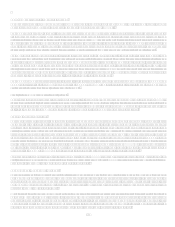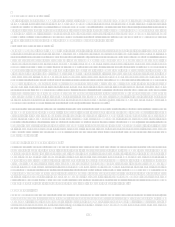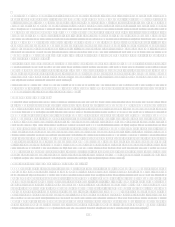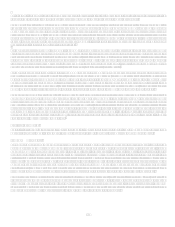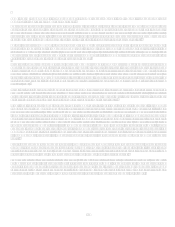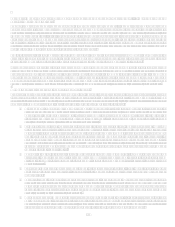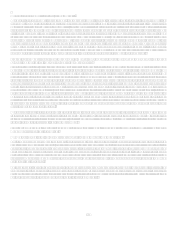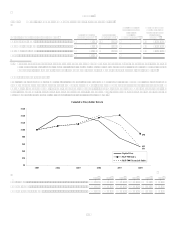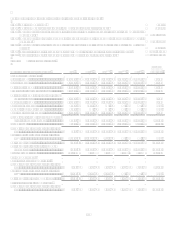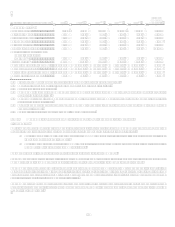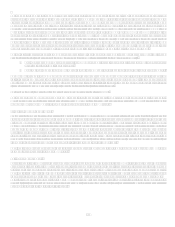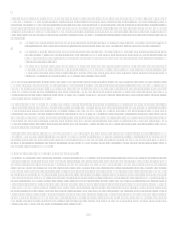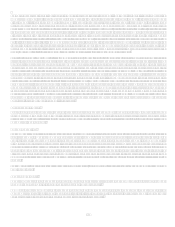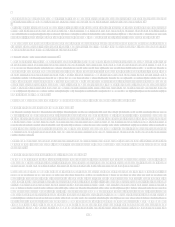Capital One 2008 Annual Report Download - page 42
Download and view the complete annual report
Please find page 42 of the 2008 Capital One annual report below. You can navigate through the pages in the report by either clicking on the pages listed below, or by using the keyword search tool below to find specific information within the annual report. 24
We Face Risk Related To The Strength Of Our Operational, Technological And Organizational Infrastructure
Our ability to grow and compete is dependent on our ability to build or acquire the necessary operational and technological
infrastructure and to manage the cost of that infrastructure while we expand and as we integrate acquired businesses. Similar to other
large corporations, operational risk can manifest itself in many ways, such as errors related to failed or inadequate processes, faulty or
disabled computer systems, fraud by employees or persons outside of the Company and exposure to external events. We are dependent
on our operational infrastructure to help manage these risks. From time to time, we may need to change or upgrade our technology
infrastructure. We may experience disruption, and we may face additional exposure to these risks during the course of making such
changes. In addition, as we acquire other institutions, we face additional challenges when integrating different operational platforms.
Such integration efforts may be more disruptive to the business and/or more costly than we anticipate.
In some cases, we outsource the maintenance and development of our operational and technological functionality to third parties.
These third parties may experience errors or disruptions that could adversely impact us and over which we may have limited control.
Any increase in the amount of our infrastructure that we outsource to third parties may increase our exposure to this risk.
In addition, we are heavily dependent on the strength and capability of our technology systems which we use both to interface with
our customers and to manage our internal financial and other systems. Our ability to develop and deliver new products that meet the
needs of our existing customers and attract new ones depends on the functionality of our technology systems. Our ability to develop
and implement effective marketing campaigns also depends on our technology. Additionally, our ability to run our business in
compliance with applicable laws and regulations is dependent on these infrastructures. Any disruptions or failures of our infrastructure
or technology systems could cause us to be unable to market, manage and report on our products, services and financial results in a
timely and accurate manner.
The Companys Business Could Suffer If It Is Unable To Attract, Retain and Motivate Skilled Senior Leaders
The Companys success depends, in large part, on its ability to retain key senior leaders, and competition for such senior leaders can
be intense in most areas of the Companys business. The executive compensation provisions of the EESA, including amendments to
such provisions implemented under the American Recovery and Reinvestment Act of 2009, are expected to limit the types of
compensation arrangements that the Company may enter into with its most senior leaders upon adoption of implementing standards by
the U.S. Treasury These standards, and any further legislation or regulation restricting executive compensation could have a negative
impact on the Companys ability to attract, retain and motivate such leaders in support of the Companys long-term strategy. In
addition, many of the companies with which the Company competes for senior talent may not be subject to such compensation
limitations. If we are unable to retain talented senior leadership, our business could suffer.
Certain Of Our Businesses Are Subject To Increased Litigation Risks
Our credit card business is subject to increased litigation as a result of the structure of the credit card industry, and we face risks from
the outcomes of such industry litigation. Substantial legal liability against the Company could have a material adverse financial effect
or cause significant reputational harm to us, which could seriously harm our business. For a full description of the litigation risks that
we face in connection with the structure of the credit card industry, please refer to Industry Litigation in Item 8 Financial Statements
and Supplementary Data Notes to the Financial Statements Note 19.
We Face The Risk Of Fluctuations In Our Expenses And Other Costs That May Hurt Our Financial Results
Our expenses and other costs, such as operating, labor and marketing expenses, directly affect our earnings results. In light of the
extremely competitive environment in which we operate, and because the size and scale of many of our competitors provide them with
increased operational efficiencies, it is important that we are able to successfully manage our expenses. Many factors can influence the
amount of our expenses, as well as how quickly they may increase. Investments in infrastructure, which may be necessary to maintain
a competitive business, may increase operational expenses in the short-run. As our business develops, changes or expands, additional
expenses can arise from management of outsourced services, asset purchases, structural reorganization, a reevaluation of business
strategies and/or expenses to comply with new or changing laws or regulations. Integration of acquired entities may also increase our
expenses, and we may be less able to predict the operational expenses of newly acquired businesses. In addition, we face the risk that
the benefits of the Companys cost savings initiative may not be fully realized. If we are unable to successfully manage our expenses,
our financial results will suffer.
We Face Risks From Unpredictable Catastrophic Events
Natural disasters or other catastrophic events, including terrorist attacks, may have a negative effect on our business and infrastructure,
including our information technology systems. Due to our banking locations in Louisiana and Texas, we are exposed to hurricanes and
related damage; in New York and New Jersey, severe winter weather could impact our operations. The impact of such events and
other catastrophes on the overall economy may also adversely affect our financial condition or results of operations.


